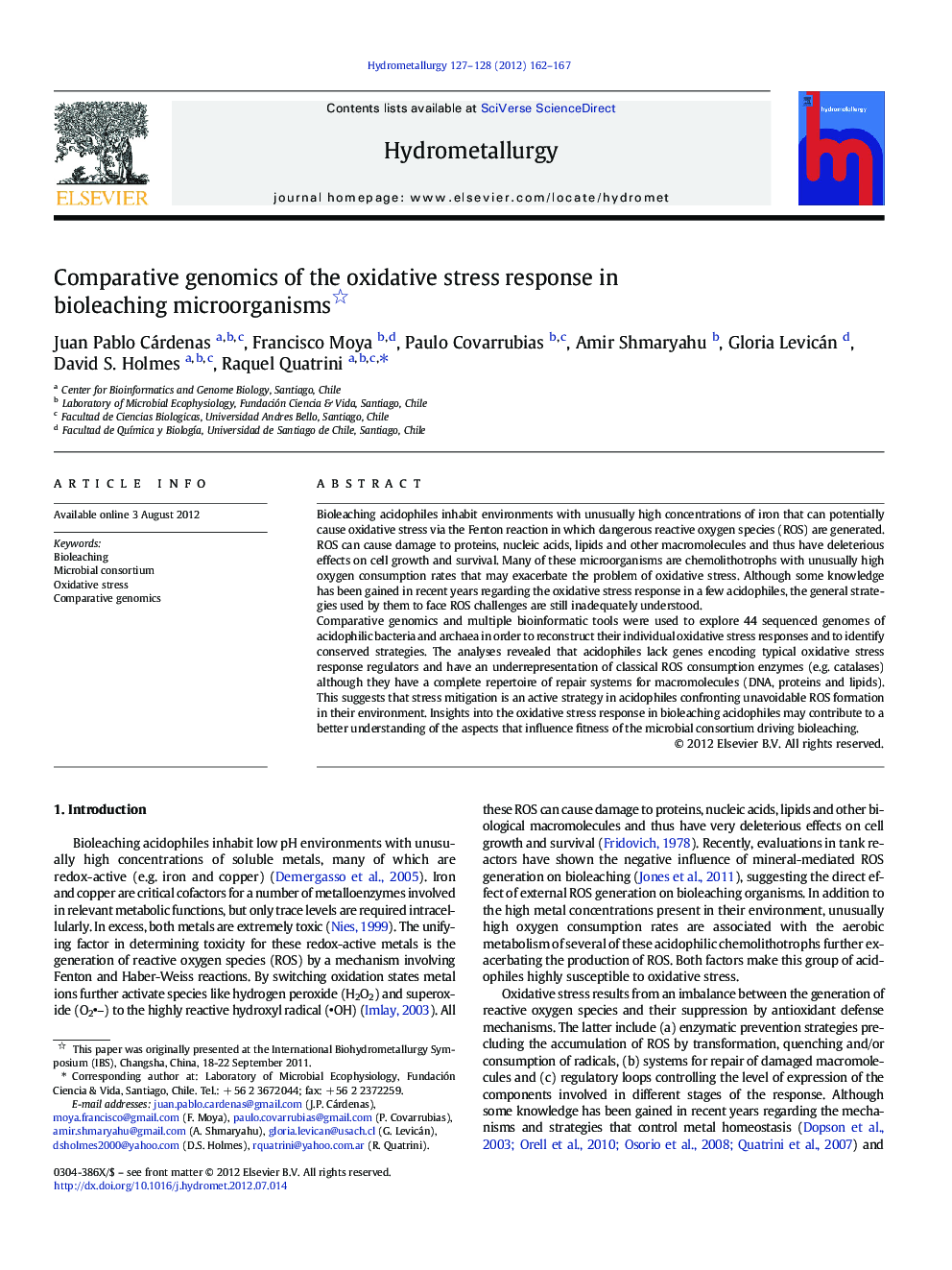| کد مقاله | کد نشریه | سال انتشار | مقاله انگلیسی | نسخه تمام متن |
|---|---|---|---|---|
| 212515 | 462052 | 2012 | 6 صفحه PDF | دانلود رایگان |

Bioleaching acidophiles inhabit environments with unusually high concentrations of iron that can potentially cause oxidative stress via the Fenton reaction in which dangerous reactive oxygen species (ROS) are generated. ROS can cause damage to proteins, nucleic acids, lipids and other macromolecules and thus have deleterious effects on cell growth and survival. Many of these microorganisms are chemolithotrophs with unusually high oxygen consumption rates that may exacerbate the problem of oxidative stress. Although some knowledge has been gained in recent years regarding the oxidative stress response in a few acidophiles, the general strategies used by them to face ROS challenges are still inadequately understood.Comparative genomics and multiple bioinformatic tools were used to explore 44 sequenced genomes of acidophilic bacteria and archaea in order to reconstruct their individual oxidative stress responses and to identify conserved strategies. The analyses revealed that acidophiles lack genes encoding typical oxidative stress response regulators and have an underrepresentation of classical ROS consumption enzymes (e.g. catalases) although they have a complete repertoire of repair systems for macromolecules (DNA, proteins and lipids). This suggests that stress mitigation is an active strategy in acidophiles confronting unavoidable ROS formation in their environment. Insights into the oxidative stress response in bioleaching acidophiles may contribute to a better understanding of the aspects that influence fitness of the microbial consortium driving bioleaching.
► Acidophiles lack catalases and classical oxidative stress response regulators.
► Thioredoxins and peroxiredoxins are well-represented in acidophiles.
► DNA repair pathways are conserved in this set of acidophiles.
► Presence of GSH biosynthesis and utilization genes is limited in acidophiles.
► Acidophiles make use of alternative LMW thiols and/or the CoA disulfide reductase.
Journal: Hydrometallurgy - Volumes 127–128, October 2012, Pages 162–167